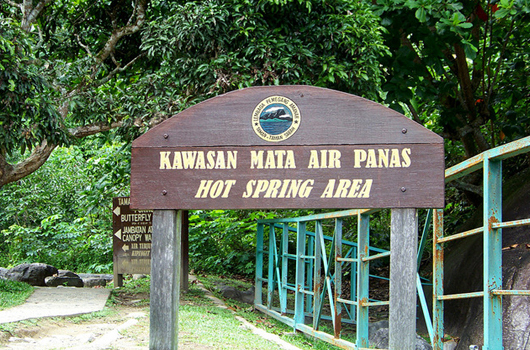Summary Project
SUMMARY
Flood is a common natural disaster occurring almost every year in Malaysia and it’s impact seems to have increased in Kuantan in recent years. Some impacts of flood in urban and rural areas are already assessed directly or indirectly. Unfortunately, impacts of flood on abiotic and biotic components of river ecosystems are not assessed yet specially for Kuantan river although Kuantan river plays an important and lifesustaining role for many inhabitants in Kuantan. Therefore, the proposed study is designed to assess the impacts of flood on (i) nitrogenous and phosphorous nutrients, (ii) structure of the micro-communities (bacteria, phytoplankton, zooplankton, benthic micoinvertebrates), and (iii) growth and condition of fish in the Kuantan river. For this study, a total of five samplings will be conducted at the Kuantan river for a period of nine months from 1st April to 31st December 2015. For this study, samples will be collected at three stations: the Kuantan river estuary (mouth), and 5 km and 10 km upstream of the Kuantan river estuary. Pre-flood and post-flood data on nutrients, plankton, benthic microinvertebrates, and growth and condition factor of fish will be analyzed using appropriate statistics to assess the impacts of flood. A multivariate statistical techniques will also be used to elucidate the important factors that affects nutrients, micro-communities, and growth and condition of fishes in the Kuantan river. This study would be useful for policy making to manage the abiotic and biotic components of Kuantan river ecology. The proposed study would also be helpful in designing ecological monitoring programmes in order to understand the river nutrients and community dynamics before and after flood.
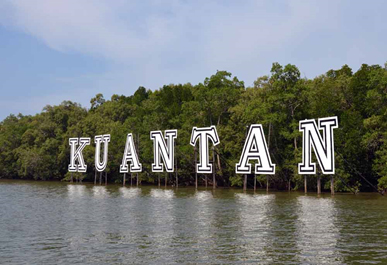
SUMMARY
Indoor air quality in nurseries and kindergarten are an interesting case of study mainly due to children’s high vulnerability to exposure to airborne pollutants, and because nursery is the public environment where young children (particularly for infants) spend most of their time indoors. Airborne particulate matter (PM) from the urban environment, including vehicle combustion and industry, may potentially increase indoor pollutant concentration via infiltration, as well as being released indoors. In addition, the proportion of ‘organic PM’ contains biological components, such as endotoxin in bacteria and fungi which identified as the major contributors to respiratory enteric microorganisms that leads to chronic respiratory diseases like asthma. Thus, the cross sectional monitoring that will be assessed in this study will envisage the children’s exposure in toxicological perspective towards urban PM pollutants. This will be achieved by determination of the two distinct aims. Objectives: The first concern is to assess the physical and chemical characteristics from indoor airborne PM. The second concerns to establish the characterization of airborne enteric microorganisms in lined with indoor airborne PM mass concentration. Methodology: The main work of this project will evaluate indoor airborne PM concentrations (PM1, PM2.5, PM10 and PMTSP) and to identify the airborne enteric microbes on different indoor microenvironments in urban child care institutions. The building characteristics, occupancy rate and outdoor environment will be monitored in this study. Significant output: The beneficial comparative study of PM characteristics and its relation to airborne enteric microbes distribution will be established in this study. This study will be able to demonstrate the building characteristics and occupancy factors that can be improved to control and even to eliminate such pollutants towards hygienic and healthy child care microenvironments.
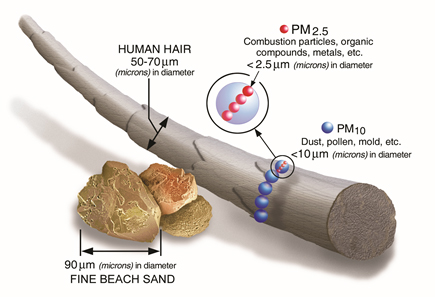
SUMMARY
Horseshoe crab is a unique Arthropoda and also known as a living fossil because of the ancient morphological appearance. The horseshoe crabs in Malaysia has potential use in medical and pharmaceutical as well as in fishery industry. Their feeding mechanism involves foraging activity and selection of prey. During landing on the beach in their spawning season, it is not known if they will do any foraging activity at the same time. They could land with empty stomach or they already had their meal on the way to the beach. The Atlantic species was reported to prefer molluscs prey but a mangrove species from Malaysia was reported to prefer the polychaetes. The understanding on their feeding mechanisms is crucial for sustainable exploitation of the animal. Thus, this project aims to determine the behavior in term of foraging and prey selection as to predict the mechanism used by the animal for feeding purpose.Two field experiments on foraging and prey selection will be conducted on the selected beach. The stomach content analysis will be carried out. Prey selection experiment will be carried out to observe their response on different prey. The results will be able to answer the hypothesis on the level of food in their stomach, the foraging and the influence of prey on their selectivity. As horseshoe crab is now gazetted as a fishery commodity under the Fisheries Department, the finding will help in the planning for aquaculture and management of fisheries stock. It will support the RMK-11 for Malaysia to become self sufficient in term of improving the income distribution and poverty particularly to the low-income group such as the fisheries community. The sustainable fishery of the horseshoe crab will help the aspiration in biotechnology thus supports the Malaysia plan for Creation of Bumiputera Commercial and Industrial Community (BCIC)
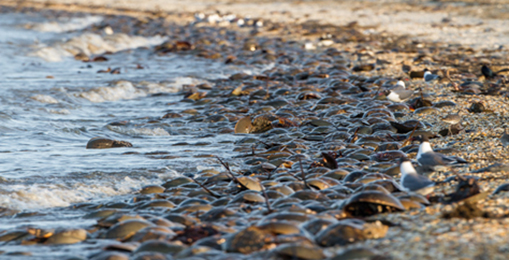
SUMMARY
Recent interest in Indoor Air Quality suggests the contribution of outdoor and indoor (I/O) airborne particulate matter (PM) is responsible for the aggregation of a number of respiratory illnesses. Because of these health implications, many researchers were looked at the severity of human lung effects due to airborne pollutants toxicity through public health assessment via lung function test and biological monitoring. However, these current methods are extremely time consuming, costly and require ethical procedures as well as public consent implication. Thus, the introduction of in-vitro oxidative potential assessment model that will be developed in this study will make such assessment in the simplest way, cheap and also mimic to envisage the ‘real’ toxicity effect in the human lung function. Objectives: This will be achieved by determination of the two distinct aims. The first concern is to assess the physical and chemical characteristics from both sources of I/O PM. The second concerns to establish spatial and temporal descriptive analysis of the indoor-outdoor PM oxidative potential (OP) assesment model in long term dataset. Methodology: The main work of this project will involve the analysis of PM captured from sample filters to assess sample toxicity in the different microenvironment settings within an industrial area. The building characteristics, occupancy rate and outdoor environment will be monitored in this study. Significant output: The novel time series of indoor-outdoor of PM toxicity will be established in this study to highlight clear characteristics between the two sources. This study will be able to demonstrate that oxidative activity in the context of particulate metrics, from both internal and external sources, is a useful tool to overview the PM toxicity into the human lung as well as to illustrate any source changes in the transfer of pollutants into buildings.

SUMMARY
Kuantan river is experiencing severe anthropogenic pollution input due to a drastic increase on the population growth and settlement near river banks. At present, more than 300 families depend on the fish catch from Kuantan river and over 150 small boats were indulging in fishing every day. Field observation clearly showed that the fishes inhabiting near the estuary is facing serious exposure to high pollution level that eventually led to pungent small in their tissue. It is also believed that few sensitive species were disappeared due to pollution threat. Above all, the construction of Dam ‘locally known as cobalt dam’ in midway through acting as a barrier for fishes from upstream to migrate to downstream and vise-verse. Hence the present inventory study is proposed to check the current status of fish diversity in Kuantan river. Based on above perspectives the objectives of this study are: i) To prepare the checklist on the available fishes of Kuantan river, ii)To investigate the taxonomic status of Kuantan river fishes iii)to identify the fishes using mtDNA marker (Cytochrome Oxidase1 gene). Total DNA will be isolated from edible tissue and PCR amplification will be done using universal primer set. The PCR products will be gel eluded and sequenced based on standard protocols. The barcode sequences generated in this study will be subjected to BOLD analysis online. It is expected this study will produce the first hand comprehensive information on the existing number of fish species in Kuantan river and branching water bodies. The effect of ‘ cobalt Dam’ on the fish migration can be visualized by observing higher mutation rate in respiratory protein (COX1). This study will also generate a DNA data base which will be deposited in NCBI for future reference and sustainable fishery management practices in Kuantan river.
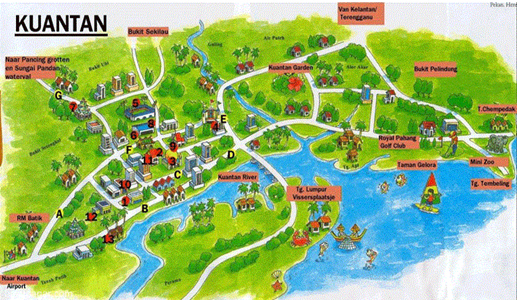
SUMMARY
Currently there is a great interest in hot springs, which are the natural habitat of thermophilic and hyperthermophilic microorganisms with optimal growth temperatures of >55 °C and >80 °C, respectively. This study consists of the analysis of major ions such as cations and anions present in the Poring hot spring. Analysis of various mineral compositions present in the spring water is important in determine the water quality of spring. As it can be seen that hot spring has being used in several function especially in medical treatment. Most of the previous studies about the hydrochemistry of hot spring have been done around the world and it has showed that the amount of ions present in the spring water can be used to identify the recharge origin and mixing behavior of thermal water.
